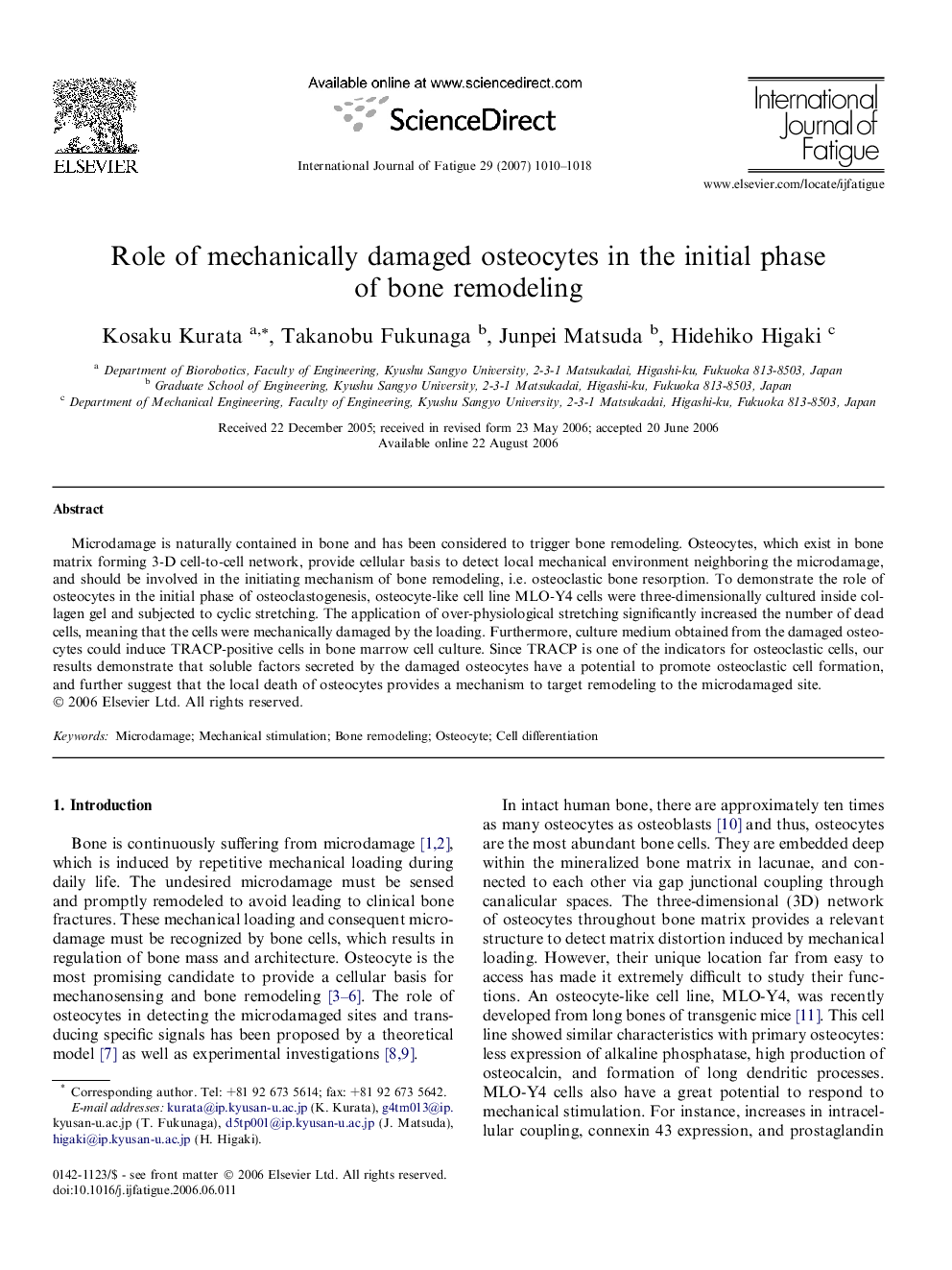| Article ID | Journal | Published Year | Pages | File Type |
|---|---|---|---|---|
| 775944 | International Journal of Fatigue | 2007 | 9 Pages |
Microdamage is naturally contained in bone and has been considered to trigger bone remodeling. Osteocytes, which exist in bone matrix forming 3-D cell-to-cell network, provide cellular basis to detect local mechanical environment neighboring the microdamage, and should be involved in the initiating mechanism of bone remodeling, i.e. osteoclastic bone resorption. To demonstrate the role of osteocytes in the initial phase of osteoclastogenesis, osteocyte-like cell line MLO-Y4 cells were three-dimensionally cultured inside collagen gel and subjected to cyclic stretching. The application of over-physiological stretching significantly increased the number of dead cells, meaning that the cells were mechanically damaged by the loading. Furthermore, culture medium obtained from the damaged osteocytes could induce TRACP-positive cells in bone marrow cell culture. Since TRACP is one of the indicators for osteoclastic cells, our results demonstrate that soluble factors secreted by the damaged osteocytes have a potential to promote osteoclastic cell formation, and further suggest that the local death of osteocytes provides a mechanism to target remodeling to the microdamaged site.
